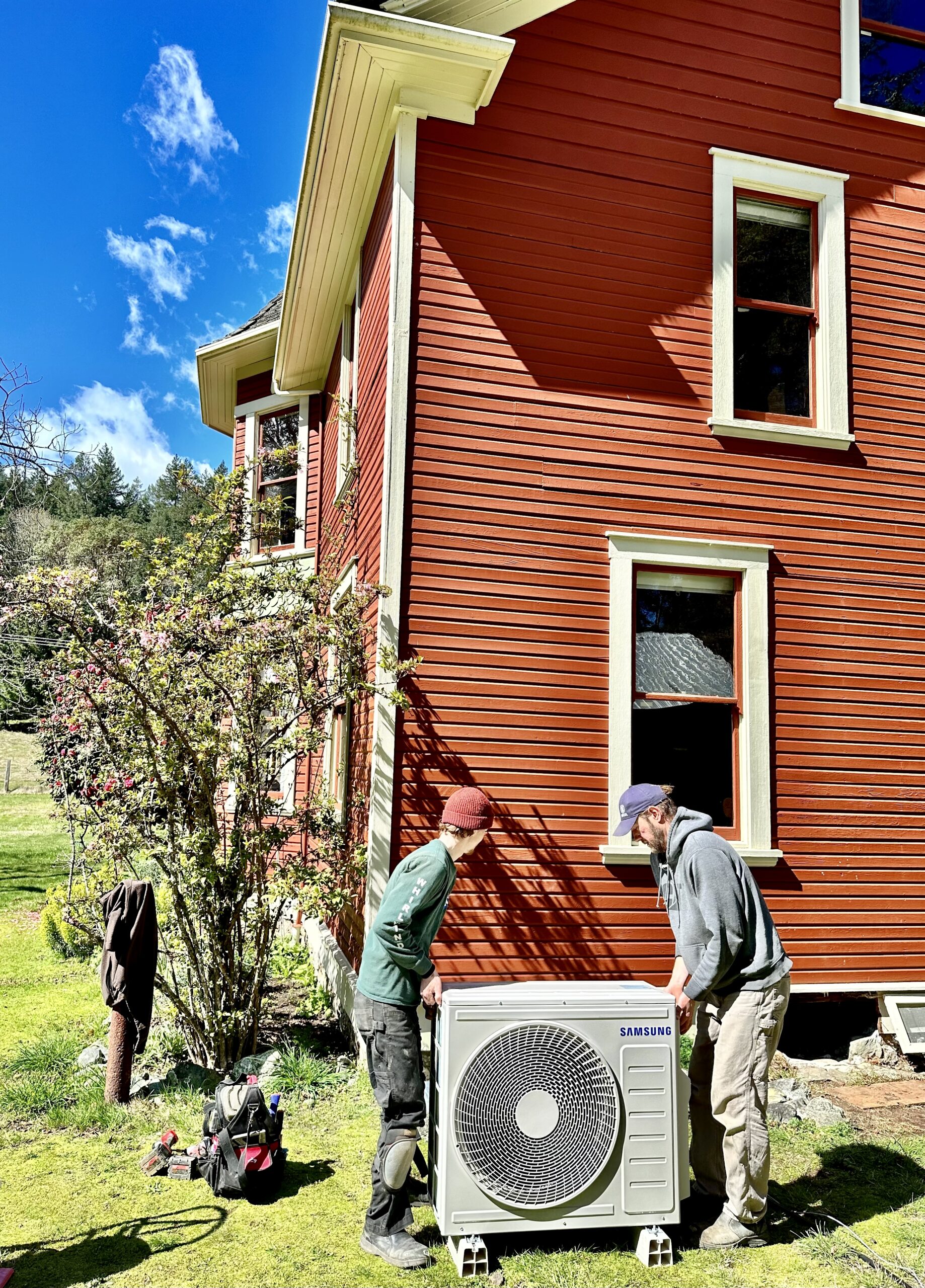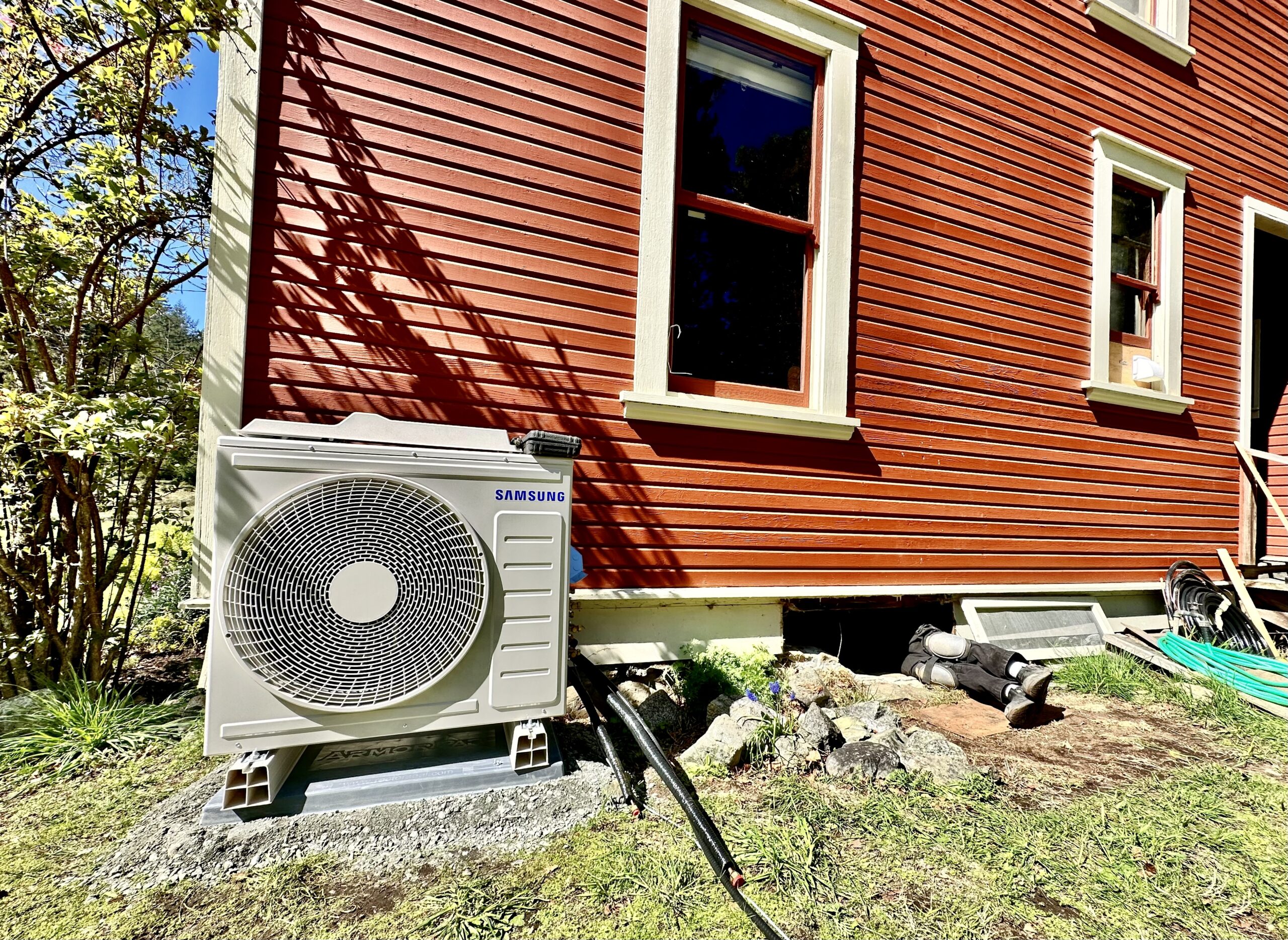

Sources of heat pump energy can vary but there are two primary configurations of heat pumps. Both Ducted and Mini-Splits operate with the same principle of transferring heat from one place to another instead of creating the heat itself like the traditional electric baseboards or furnaces.
An air source heat pump takes the hot air inside your home and moves it outside by transferring it through a series of coils indoor and outdoor. These coils contain refrigerant liquid; it changes the refrigerant from a liquid to a gas and then back again to continually move the warm air from inside to the outdoors which then cools your home in the process. To heat the home the process is reversed. This process is a natural way to heat transfer and is one of the reasons why heat pumps are so efficient. The versatility of this equipment is an ideal solution for both heat domes and cold Canadian winter days on the coast.
The defrost cycle occurs when ice forms on the outdoor components of your heat pump on really cold days. When this happens, your heat pump actually goes into air conditioning mode to thaw the ice. While it is alarming the first time it happens, just know it is completely normal.
An air-to-air heat pump is what is known as an Air-Source Heat Pump. These heat pumps transfer heat from outdoor air into your indoor air and vice versa. An earth-to-air heat pump, or Ground-Source Geothermal Heat Pump, transfers heat from the earth into your indoor air and vice versa.
Like all heating and cooling systems, heat pump sizing varies according to your specific needs. When a contractor comes to your home to give you an estimate, they should preform a load calculation to determine which size you need. Heat pump size is measured in tons – the more tonnes, the bigger the system.
Since your heat pump is designed to heat and cool your home, it may be operating year-round. Depending on your climate, it’s a good idea to schedule a cooling checkup in the spring and a heating maintenance service call in the fall. Seasonal preventive maintenance on your heating and cooling system may guard against many unexpected failures and could maximize its life.
When it’s cold outside, the outside of your heat pump may develop a coating of frost or light ice. Don’t be alarmed! When this happens, the defrost control senses it and automatically starts a defrost cycle. However, if you notice a heavy coating of ice, contact your licensed HVAC dealer.
SEER and HSPF are the efficiency ratings assigned to a heat pump. The SEER (Seasonal Energy Efficiency Ratio) measures the efficiency of a heat pump in cooling mode. HSPF (Heating Season Performance Factor) measures the efficiency of a heat pump in heating mode. The higher the SEER and HSPF number, the more efficient the unit is designed to be in heating and cooling mode.